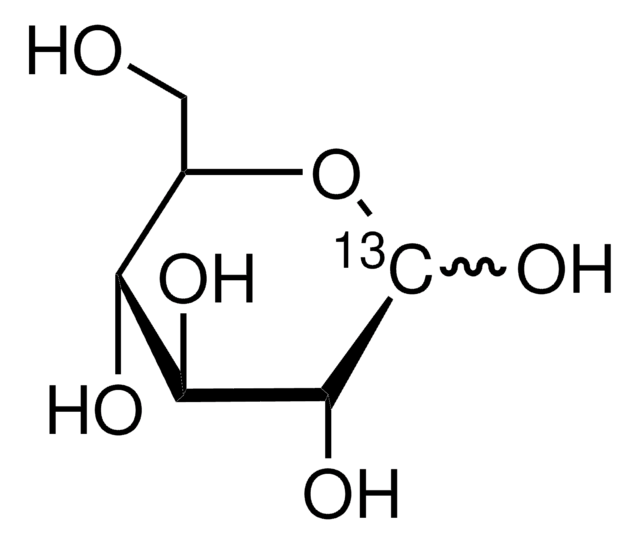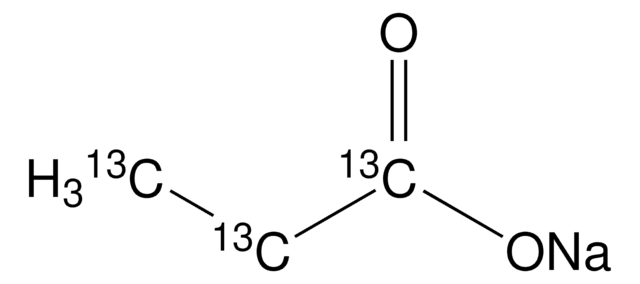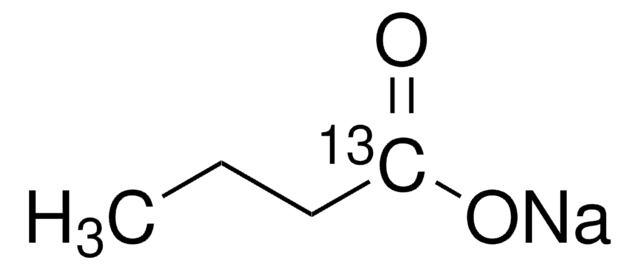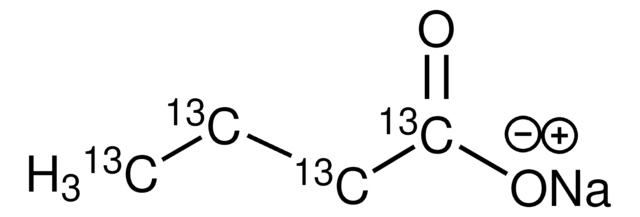282014
Sodium acetate-13C2
99 atom % 13C
Sinonimo/i:
13C Labeled acetic acid sodium salt, 13C Labeled sodium acetate, Acetic acid-13C2 sodium salt
About This Item
Prodotti consigliati
Purezza isotopica
99 atom % 13C
Livello qualitativo
tecniche
bio NMR: suitable
protein expression: suitable
Punto di fusione
>300 °C (dec.) (lit.)
Spostamento di massa
M+2
Stringa SMILE
[Na+].[13CH3][13C]([O-])=O
InChI
1S/C2H4O2.Na/c1-2(3)4;/h1H3,(H,3,4);/q;+1/p-1/i1+1,2+1;
VMHLLURERBWHNL-AWQJXPNKSA-M
Cerchi prodotti simili? Visita Guida al confronto tra prodotti
Confezionamento
Codice della classe di stoccaggio
11 - Combustible Solids
Classe di pericolosità dell'acqua (WGK)
WGK 1
Punto d’infiammabilità (°F)
Not applicable
Punto d’infiammabilità (°C)
Not applicable
Dispositivi di protezione individuale
Eyeshields, Gloves, type N95 (US)
Scegli una delle versioni più recenti:
Possiedi già questo prodotto?
I documenti relativi ai prodotti acquistati recentemente sono disponibili nell’Archivio dei documenti.
I clienti hanno visto anche
Articoli
Solid-state NMR on Larger Biomolecules; Sigma-Aldrich.com
Dynamic Nuclear Polarization (DNP) is a phenomenon by which high spin polarization, typically derived from a bath of free radical electrons, is transferred to a nuclear spin bath, enhancing the difference between the nuclear energy levels and thereby producing dramatically enhanced NMR signals for detection.
Sigma-Aldrich.com presents an article concerning MRI/MRS and the use of isotopes in hyperpolarization.
Il team dei nostri ricercatori vanta grande esperienza in tutte le aree della ricerca quali Life Science, scienza dei materiali, sintesi chimica, cromatografia, discipline analitiche, ecc..
Contatta l'Assistenza Tecnica.














